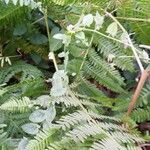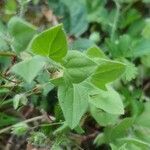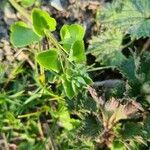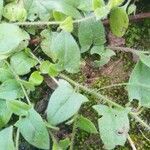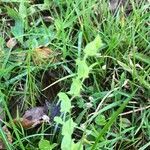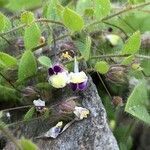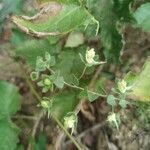Stems freely branched, villous, to 5 dm; petioles 1–5 mm; lvs broadly ovate to triangular-ovate, 1–3 cm, truncate at base, ± hastate by the development of 1–2 low teeth at the lateral angles; pedicels very slender, 1–3 cm, glabrous throughout or villosulous near the base and summit only; fls as in no. 1 [Kickxia spuria (L.) Dumort.]; 2n=18, 36. Native of Eurasia, established as a weed in moist sandy soil in most of our range, s. to Fla. and La. June–Sept. (Linaria e.)
